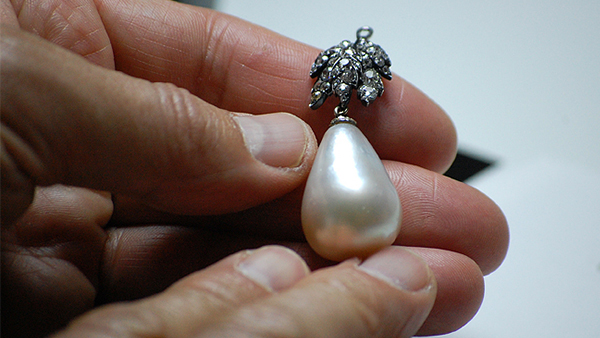Pearl trade routes could be revealed with DNA
by Samantha Ashenhurst | June 8, 2020 5:31 pm
 [1]
[1]Photo courtesy SSEF
Identifying and documenting the origin of notable pearls is central to a new service from the Swiss Gemmological Institute (SSEF).
The lab, in partnership with the Institute of Forensic Medicine at the University of Zurich (UZH), has expanded its DNA fingerprinting reference database and capabilities to include eight oyster species that produce the vast majority of pearls found in the natural and cultured trade.
The method was first developed by SSEF and public research university ETH Zurich, with reports published in academic journals in 2013. Since then, methods for obtaining DNA from a pearl have been refined, SSEF says, and the amount of material required for testing has considerably reduced.
The DNA fingerprinting, when combined with SSEF’s pearl age-dating technology, could provide scientific insight into the formation of pearls, as well as offer better understanding of historic pearl trading routes.
“We are happy to build on decades of pearl research at SSEF to launch this new service for the pearl trade,” says the lab’s director, Michael S. Krzemnicki, PhD. “DNA fingerprinting will contribute to further documenting the origin and geographic provenance of historic natural pearls and traceability efforts in the cultured pearl trade.”
The pearl species able to be distinguished conclusively using SSEF’s DNA fingerprinting methods are:
- Arabian/Persian Gulf and Ceylon pearl oyster (Pinctada radiata);
- Atlantic pearl oyster (Pinctada imbricate);
- akoya pearl oyster (Pinctada fucata/martensii);
- South Sea pearl oyster (Pinctada maxima);
- Tahitian black-lipped pearl oyster (Pinctada margaritifera);
- Panama pearl oyster (Pinctada mazatlanica);
- pipi pearl oyster (Pinctada maculata); and
- rainbow-lipped pearl oyster (Pteria sterna).
For more information, click here[2].
- [Image]: https://www.jewellerybusiness.com/wp-content/uploads/2020/06/SA_SSEF.jpg
- here: https://journals.plos.org/plosone/article?id=10.1371/journal.pone.0075606
Source URL: https://www.jewellerybusiness.com/news/pearl-trade-routes-could-be-revealed-with-dna/